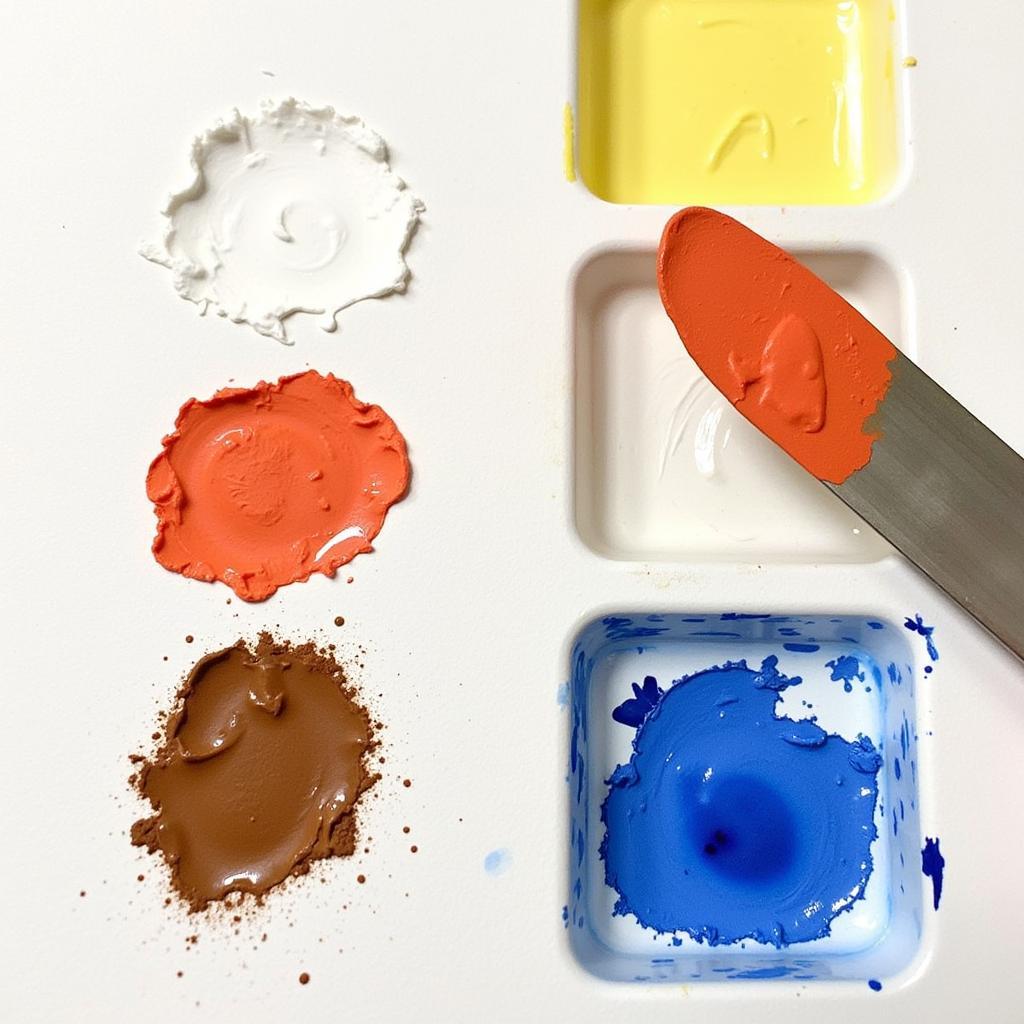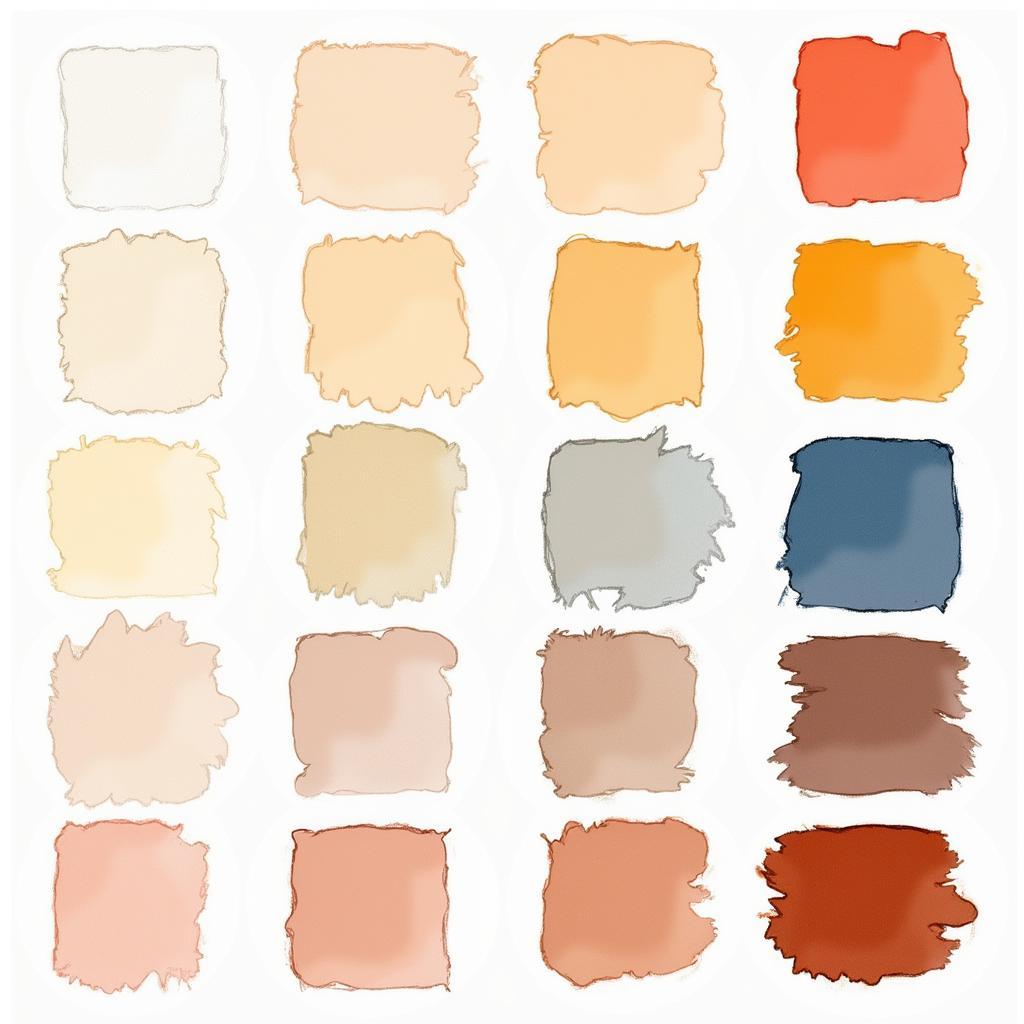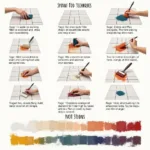Creating realistic skin tones is a fundamental skill for any artist. Whether you’re painting a portrait, a figure, or even a fantasy creature, knowing how to mix skin color with paint can bring your artwork to life. This guide will explore various techniques and color combinations to help you achieve natural-looking skin tones in your paintings.
Understanding the Complexities of Skin Color
Skin color isn’t just a single shade; it’s a complex interplay of pigments, undertones, and light reflections. Before diving into mixing, it’s crucial to understand these factors. Skin tones vary widely, influenced by genetics, ethnicity, and environmental factors like sun exposure. This means there’s no single “correct” skin color recipe. Instead, you need to develop a keen eye for observing and replicating the subtle variations in hue and value.
Essential Colors for Mixing Skin Tones
While the specific colors you use might vary depending on the brand and type of paint, a core set of pigments is generally recommended for mixing realistic skin tones. These include:
- White: Provides the base and helps to lighten other colors. Titanium White is a popular choice.
- Yellow Ochre: A warm, earthy yellow that mimics the underlying yellow pigment in skin.
- Red: Adds warmth and depth. Cadmium Red or Alizarin Crimson are common options.
- Brown: Burnt Sienna or Raw Umber can be used to create darker skin tones and add depth to shadows.
- Blue: A touch of blue, such as Ultramarine Blue or Phthalo Blue, can be helpful for creating cooler undertones.
 Mixing Basic Skin Tones
Mixing Basic Skin Tones
Mixing Light Skin Tones
For lighter skin tones, start with a base of white and gradually add small amounts of yellow ochre, red, and a touch of blue. The ratio of these colors will determine the warmth and coolness of the skin tone. Experiment with different combinations to achieve the desired shade. Remember, less is more when adding red and blue.
Adding Depth and Dimension to Light Skin Tones
To create more realistic light skin tones, consider adding a tiny amount of burnt sienna or raw umber to deepen the shadows and create contrast. This will prevent the skin from looking flat and lifeless.
 Light Skin Tone Variations
Light Skin Tone Variations
Mixing Medium and Dark Skin Tones
For medium and dark skin tones, start with a base of burnt sienna or raw umber. Add yellow ochre and red to warm the color. For darker skin tones, use more brown and less yellow. You can also add a touch of blue to create cooler undertones.
Avoiding Common Mistakes
A common mistake when mixing darker skin tones is using black. Black can make the skin look muddy and unrealistic. Instead, focus on using browns and blues to create depth and richness.
How Do I Match a Specific Skin Tone?
Matching a specific skin tone requires careful observation. Start by identifying the underlying hues and values in the reference image or subject. Then, mix your colors gradually, constantly comparing your mixture to the reference. Don’t be afraid to experiment and adjust your colors until you achieve a close match.
Conclusion
Mastering the art of mixing skin color with paint takes practice and patience. By understanding the underlying principles of color theory and experimenting with different color combinations, you can create realistic and vibrant skin tones that bring your artwork to life. Remember, there’s no one-size-fits-all approach. The key is to develop your eye for color and continue to refine your technique. Keep practicing, and you’ll be creating beautiful and believable skin tones in no time!
FAQ
- What is the best white to use for mixing skin tones?
- Can I use black to mix darker skin tones?
- How do I prevent my skin tones from looking muddy?
- What is the difference between warm and cool undertones in skin?
- How do I mix skin tones for different ethnicities?
- What are some good exercises for practicing skin tone mixing?
- What other colors can I add to my skin tone palette for more variety?
Need help with your color choices? Contact us! Phone: 0373298888, Email: [email protected] or visit us at 86 Cau Giay, Hanoi. We have a 24/7 customer service team.

